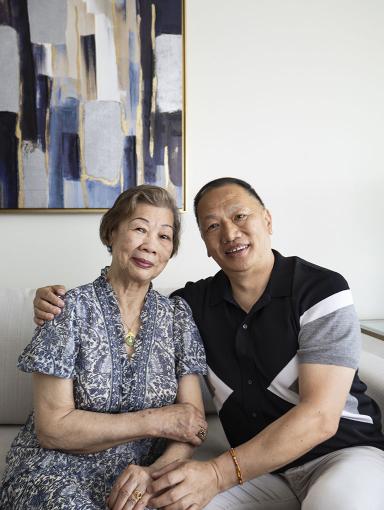Study Reports Nursing Home Hip Fracture Rates Stay Persistently High
BOSTON – A recent study of hip fracture rates in nursing homes in the U.S. reports a slight rise in the rate of hip fractures among long-stay residents in recent years. Researchers looked at data collected between 2007 and 2015 and found, despite a dip in 2013, rates have begun to rise again even though long- stay nursing home admissions have declined. Sarah T. Berry, M.D., M.P.H., Associate Director of the Musculoskeletal Research Center in the Hinda and Arthur Marcus Institute for Aging Research, is lead author on the paper recently published in the Journal of Bone and Mineral Research. The purpose of the study was to describe trends in hip fracture rates and post-fracture mortality among 2.6 million newly admitted U.S. nursing home residents from 2007 to 2015, and to examine whether these trends could be explained by differences in resident characteristics. Understanding the prevalence of fractures and what puts individuals at risk is important to reducing the incidence of fractures in this vulnerable population.
Thirty-six percent of nursing home residents with hip fractures will die within six months, and another 17.3 percent of ambulatory residents will become completely disabled. Among survivors, infections and pressure ulcers are common, leading to functional decline and a diminished quality of life.
Given the high morbidity, mortality, and financial expense associated with these fractures, hip fractures are a major public health concern. It is important then to characterize temporal trends of hip fractures to inform interventions and national policies aimed at ameliorating these fractures.
“Our findings underscore the magnitude of the hip fracture problem in the U.S. and should prompt widespread interventions to reduce the suffering associated with hip fractures in older adults,” said Dr. Berry.
The study’s researchers can only speculate at this point as to why nursing home fracture rates have not declined during the past decade. Among non-institutionalized older adults, a ten year downward trend in hip fracture incidence has been leveling out in the past few years. According to the paper, “available strategies exist to prevent falls and associated injuries, albeit, the success of falls prevention programs in the nursing home has been less than in the community setting. In general, nursing home residents are older and sicker, with more cognitive and functional impairment than community-dwellers. One possible explanation of these high rates is the underutilization of medications to treat osteoporosis.”
This study was funded by a National Institute on Aging grant – R01AG04544 - and in addition to Dr. Berry, included other researchers from the Marcus Institute, and researchers from Brown University and the University of Alabama at Birmingham.
About the Hinda and Arthur Marcus Institute for Aging Research
Scientists at the Hinda and Arthur Marcus Institute seek to transform the human experience of aging by conducting research that will ensure a life of health, dignity, and productivity into advanced age. The Marcus Institute carries out rigorous studies that discover the mechanisms of age-related disease and disability; lead to the prevention, treatment, and cure of disease; advance the standard of care for older people; and inform public decision-making.
About Hebrew SeniorLife
Hebrew SeniorLife, an affiliate of Harvard Medical School, is a national senior services leader uniquely dedicated to rethinking, researching, and redefining the possibilities of aging. Based in Boston, the nonprofit, non-sectarian organization has provided communities and healthcare for seniors, research into aging, and education for geriatric care providers since 1903. For more information about Hebrew SeniorLife, visit http://www.hebrewseniorlife.org, follow us on Twitter @H_SeniorLife, like us on Facebook, or read our blog.
